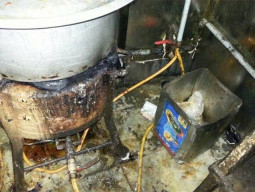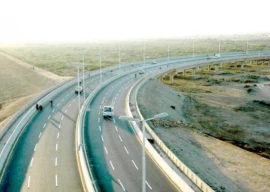
How do you persuade people to evacuate an area vulnerable to natural disaster? The answer is simple, you use the media.
“The media can be used quite effectively in order to make people realise the gravity and threat of a natural disaster,” said Pakistan Meteorological Department (PMD) Director-General Arif Mehmood at a workshop organised on Thursday in collaboration with the World Food Programme and Sustainable Land Management Project. “The role of the PMD is to issue early warnings but it is up to the government to ensure that safety precautions are being taken.”
According to the director-general, the media could help fill the gap that existed between the PMD and the areas they were unable to reach. “For example, in Nowshera during the 2010 floods, the people refused to evacuate their homes despite the efforts made by the district government,” said Mehmood. “This is where the media can step in and help people understand the risks they face.”
The PMD’s director, Azmat Hayat Khan, claimed that although they had issued an early flood warning, the people of Sindh had refused to move.
He said that the department has been using an advanced weather forecasting system for 10 years but as the people rarely took warnings seriously it did not help much. The director added that the atomic research and weather forecasting departments at PMD were equipped with sophisticated technology.
While talking about natural disasters in the country, Dr Amjad Tahir Virk of the Sustainable Land Management Project said that Pakistan was among the few Asian and African countries most likely to face natural calamities in the next four to five years.
Hurdles: communication and forecasting
For Mehmood, one of the biggest challenges was communication. “There is a need to explain terminologies and warnings in a language that is easy to understand,” he said. “We plan on introducing training courses for journalists, to help them report and write about weather.” He added that the PMD was considering a proposal to use the radio and start awareness programmes in areas which are difficult to reach.
One of the challenges, according to Mehmood, is that Pakistan’s tropical weather does not let them forecast weather for more than five days. The meteorological department needs at least six to seven radars. “Unfortunately the only radar we have monitors threats along the coastal belt,” he said. “Although it is difficult to predict floods, droughts or cyclones, the changing and extreme weather conditions cannot be ignored.”
While talking about global warming, he said that the PMD had submitted a climate change policy to the federal government.
Former meteorologist Prof. Muhammad Yousuf Amin said the media should take weather reports more seriously and prepare a bulletin on an hourly basis.
Monsoon rains or climate change
This year, the monsoon rains have caused severe flooding in 20 out of the 22 districts in Sindh, and have left the experts wondering why. Environmental scientists agree that this has happened because of climate change. The United Nations Intergovernmental Panel of Climate Change (IPCC) predicted that the global temperature would rise by four degrees centigrade by 2100. “Although it is difficult to relate individual cases of extreme weather with a climate change but if we monitor the frequency and trend of weather in Pakistan, especially in the last two decades then there is a connection,” said World Meteorological Organisation (Asia) Vice President Dr Qamaruz Zaman Chaudhry. “We cannot explain the floods in Sindh as the area that received the rain is normally very dry. The amount of rain it received is usually the amount it gets in five years.” He added Sindh received enough rain this year to fill six dams like the Tarbela Dam.
According to PMD chief Naeem Shah, we should not blame climate change and global warming for extreme weather conditions all the time. “Initially we had forecast ten per cent less rain in Sindh but in July we noticed a drastic change in the monsoon track,” he said. “There is no way to confirm and say if it was or was not related to climate change.” He added that the province had faced a similar situation in 1976. University of Karachi Environmental Studies professor Waqar Ahmed agreed with Shah’s assessment.
But a senior official at the PMD said that it was important to analyse rain patterns over the last 30 years in order to make an informed comment. “When the floods hit different parts of the Khyber-Pakhtunkhwa last year, they said that the northern part of the country was being affected by the climate change and now Sindh is suffering? This is ridiculous.”
Published in The Express Tribune, November 6th, 2011.
COMMENTS (1)
Comments are moderated and generally will be posted if they are on-topic and not abusive.
For more information, please see our Comments FAQ

















*strong textIt is not what is being said, it is who is saying it: We must not let the climate change issue die otherwise our children will die so I urge everyone to stick to the story; declare the scientific consensus and most of all point out the changes that are all around us and those changes are undeniable. So even if climate change isn't real, it ought to be because the CO2 crisis will bring (force), people to all come together with one cause, one goal and one mind. If we let carbon trading markets manage the temperature of the planet, only then will our Mother Earth be tame again and not out of its tender and fragile balance. Nature is weak and delicate and now needs us to save it from itself as Human Greenhouse gases continue to cause the changes we see before us.*